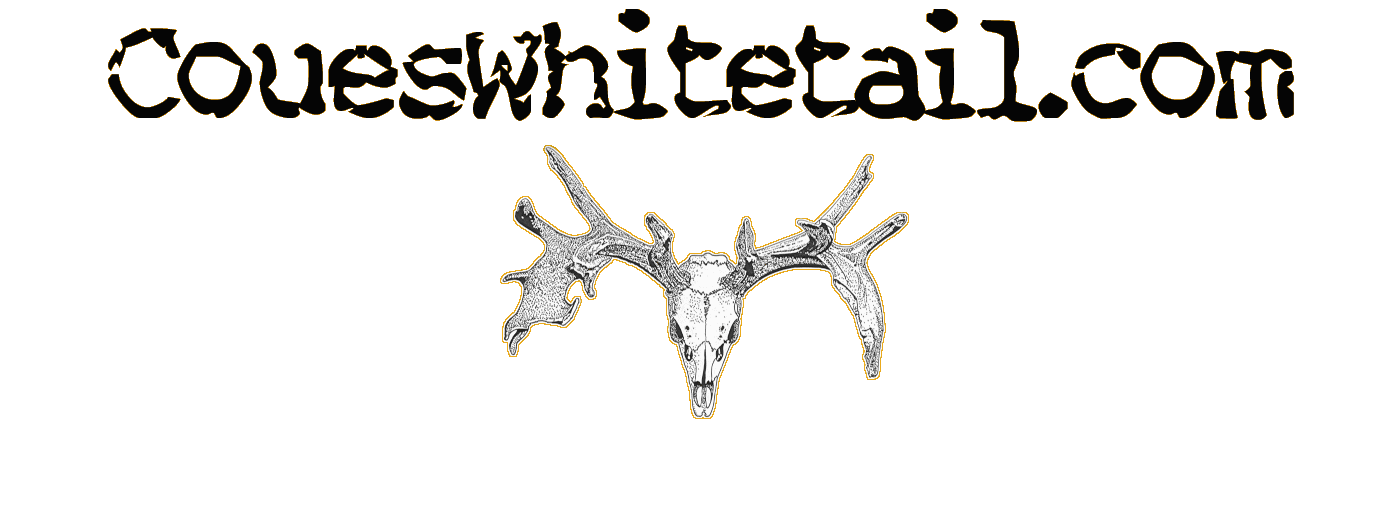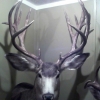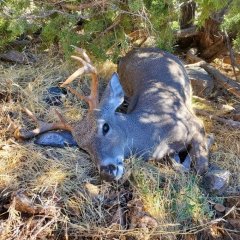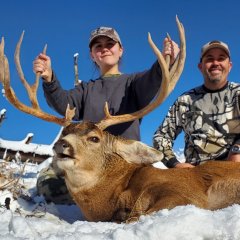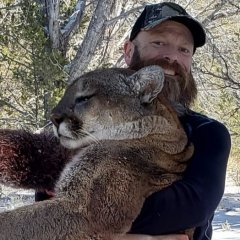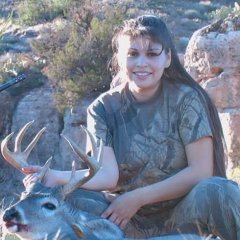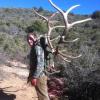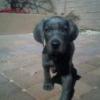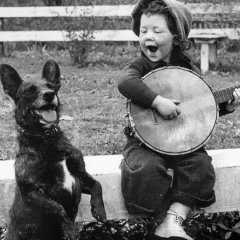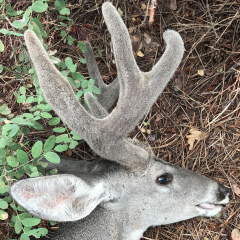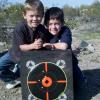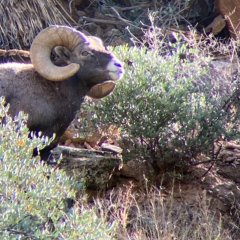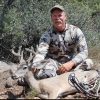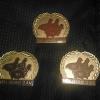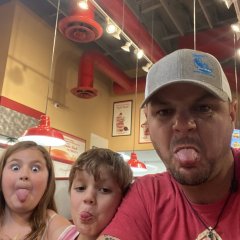Leaderboard
Popular Content
Showing content with the highest reputation on 07/07/2021 in all areas
-
7 pointsNot into basketball in any way, but they beat the Lakers and sent that POS LeBron home crying. That makes me happy.
-
4 pointsI can just about guarantee he drew the October hunt. It is extremely unlikely he had what would have been max points for the December hunt, but he would be at max for the October hunt. As such he mathematically never likely had a chance at the December hunt (he never got to the random pass past the max point round). Can't say for certain since this was the first year for that hunt but with so few tags, I would have to image max points was at least mid teens. Great hunt either way. Congrats to him.
-
3 points
-
3 points
-
3 pointsLike a 100k lol. I could. Have a billion and I still wouldn’t pay that. I don’t even really like hunting
-
3 pointsWonder how many cards got rejected because their credit limit was set to a lower number. We'll never know but I would bet the number is pretty high.
-
3 points
-
2 pointsI have a couple of very clean motorcycles for sale that are in great shape. The 2009 Kawasaki KLX250S has 5400 miles and has new tires and a FMF Q4 slip on exhaust. This has everything required to be street legal as a commuter or take it offroad and hit the trails. Title is good to go. The other bike is the Venerable 2011 Honda CRF70 in excellent condition and runs great! Great bike for running around camp or of course it is a great starter bike for the kids. 3 speed automatic. No title on this little guy SOLD
-
2 pointsAhhh, true dat. Too late for the previous marina owners and not soon enough for me and the daughters Coues hunt. But we'll manage.
-
2 pointsDon't count on it this year. I'm in for the 3a/3c late then 23 late with 11 and my card hasn't been charged yet. It's driving me crazy. I did get a youth charge for my son so I know its not a card issue.
-
2 points
-
2 pointsThey’ll be no money involved. but on your death bed, you will receive total consciousness.
-
2 pointsI'm in 3B still holding out for the strip with 14 points next year. Supposedly it's a sure thing but I wont hold my breath. Did quite a bit of riding in 3C along the rim road when it was open. Always saw some deer and a crap load of horses. Good luck hope you get one!
-
2 points
-
1 pointOver this past year I've been in the process of learning Taxidermy. I retire from the state in 7 years, so I'm hoping to make Taxidermy my retirement job. It's been a really fun learning process. Here are a few I've done recently.
-
1 point
-
1 pointHe called the week after the draw and the refund never came. $85 isn't worth the time and hassle for him to stay on the phone for an hour trying you get these morons to give him his money back. But the fact that it happened to hundreds of people at no fault of their own and then they have to take the responsibility and time out of their day to make it right? And then do it again the next draw to hundreds more? Only the government can pull that off without fraud charges.
-
1 pointYou're hoping... They should have fired the entire IT Department and their supervisor in February. If AZGF was a private company they'd be out of business. Ed F
-
1 point
-
1 point
-
1 pointNow thats a championship team if they play like tonight. Wow that was a butty kicken. 4 more
-
1 point
-
1 point
-
1 pointSince we are now less than 36 hours from seeing card charges for this season’s sheep tags, it is probably time that I finally put pen to paper and share the story of my daughter’s hunt. My father-in-law had never hunted before I married my wife. He has since become a reliable hunting companion and it is something that we enjoy doing together. It has strengthened our relationship and helped us create some great mutual memories. When he drew a sheep tag last year, he was suddenly very interested in signing the tag over to my twelve year old daughter. His rationale was that he would get just as much enjoyment out of watching her fill the tag as he would if he took a ram himself, so why not seize the chance to spread the wealth and create memories for three generations. Seeing as she was the only grandchild old enough to hunt big game at the time, in his mind it was an easy choice. I hesitated for a while, knowing full well that I would never hand over my tag, but I eventually warmed up to the idea. Some may remember that my daughter went through some serious health issues in late 2017. On our way home from her first deer hunt she started complaining of abdominal pain and extreme nausea. Not long after that we discovered that she had a mysterious grown on her pancreas. We eventually learned that it was a softball-sized malignant tumor—a form of cancer so rare that the first specialist refused to believe what she was seeing because she had never encountered it in 30 years of practice. After several months of hospitalization, three major surgeries, and a scary amount of weight loss she seemed to come out of it as strong as ever—and so far she remains cancer free to this day. Given her history, I think her grandfather was also motivated by the chance to do something extra special for her. With the tagholder question decided, I set out to start my research. I knew of someone who had the same tag 10 years earlier and reached out to him. While waiting to hear back, I also did some stalking about on Facebook and was able to identify two other former tag holders. I contacted the first and he was very excited to hear from me. As it turns out, there are five or six former tagholders who have formed a sort of fraternity with each other whose goal is to help future tagholders on the hunt. Over the next couple weeks I started amassing text messages, field photos, maps, stories, tips, all of the helpful information a sheep hunter would want. Within two weeks I had spent time on the phone with six former tagholders. By the end of July we already had five guys I had never met committed to coming to sheep camp. This was a relief for me because literally every single one of my usual hunting buddies had their own elk tags they’d be trying to fill during opening day of sheep season. The wildlife manager for the unit was also very helpful. She gave me the run down on what she was seeing and the status of several of the water catchments. As I scouted throughout the fall, she and I kept in touch on sheep movements and catchment levels. The area didn’t get any monsoon rain at all until the last few days of September, so I had her on camera multiple times as she coordinated water trucks to provide supplemental relief. Outfitter Russ Jacoby also learned about my daughter and her tag. He reached out to me to see how he could help. He spend quite a bit of time on the phone with me answering my questions and filling me in on how he would approach things. He generously loaned us some extra equipment, and we had plans for him to join us in the field once some of the late hunts were over, but her hunt ended too quickly for that. I made several scouting trips in the dead heat of summer. I used those trips to set up and check cameras and to learn the roads because the conditions too miserable to do much else. I soon found that the sheep I would see on those trips were never far from water anyways, so until something changed, I might as well let the cameras do the looking for me. I didn’t want to drag my daughter out there when it was so hot (one of the consequences of only having half of a pancreas is difficulty regulating your body heat), so her hunt preparation was shooting practice and looking over trail camera photos with me. Together we learned what to look for in a quality Class IV ram. She liked “pretty” rams, which I learned meant “lamb tips.” Because of the lack of rain, the sheep stuck to the water, and we were able to identify several rams that she would be happy to tag. The unit is not particularly known for big rams. There have been one or two anomalies to come out of it, but even the biggest rams to come out of the unit lacked mass. The average size of the bases rarely exceeds 14 2/8”. So, if we could find her a high 150s ram that she thought was pretty, then that would be the ram she would take home. The last week of September one of our late monsoon hurricanes finally dropped some water on the northern part of the unit. The catchment with the most sheep traffic overflowed with water, and I never got another photo of a sheep at that spot. Not one. The rain had largely missed the southern part of the unit, however, and I continued to get sheep on camera well into November in that area. We made arrangements to meet up with the 2010 and 2014 tagholders, George and Gabe, in mid-November for a final scouting trip. My daughter couldn’t make it that day due to a regional orchestra competition, but my father-in-law came along. We spent a couple days glassing, checking camera, and hearing their sheep stories. Near the end of the first day my ranger threw a brand new tie rod. The son of a gun just came unscrewed. We were seven miles from pavement and I had forgotten my tool back. We hand-tightened it and limped ourselves out of there. Throughout that trip Gabe kept talking about how much he’d love to find a ram dead head someday, enough so that it became a bit of a running joke. When we pulled up to one catchment he spied a skeleton down in the wash, which got his heart racing, only to discover that it was nothing but a three-point mule deer. Interestingly, I had that buck on camera only a couple days earlier. He looked absolutely horrible, like a back of bones barely alive. By the time Gabe found him, the coyotes and birds had stripped him of everything but bone and antlers. As we drove down the road away from the last catchment at the end of the second day I caught a whiff of something dead. I immediately parked the ranger and we all bailed off into the wash. After about 20 yards I spied a dead ram. He was a broken ram that my daughter and I had followed on camera through most of the summer. His horns weren’t pretty, but he had always looked healthy. He was too far gone to tell what had happened to him, but I offered the find to Gabe if he wanted it. He quickly accepted. We cleared everything with the WM, and now, after some very smelly cleaning, the skull sits at Gabe’s place. Two things happened on that trip that ultimately had a direct impact on the hunt itself. First, we got trail camera photos of a new ram that was by far the best ram that had revealed himself thus far. He was gorgeous in every way. My daughter named him Thor because of his massive body size. He was at the same water every few days for at least five weeks through mid-November. Second, the unit veterans encouraged us to pay more attention to an area that I had largely overlooked previously. That area ended up being where the hunt ended. Thor: After our November trip it was obvious that the sheep were definitely no longer tied to the water. I had expected that, but they also did not seem to be particularly interested in being in any of the areas we looked. We ended the trip having spotted a deadhead and a handful of single sheep: several ewes, a small ram, and a very tight class IV ram. I was worried, but the veteran sheep hunters were 100% confident that we had nothing to fear, that it would all work out. The plan was to leave the day after Thanksgiving to set up camp. We would scout the second half of the day and then all day Saturday and hopefully have some sheep located before opening morning on Sunday. We didn’t get the horrible snow that the late elk hunters got that weekend, but the desert was definitely wet, windy, and quite cold. My buddy and his daughter joined us for Friday and Saturday, but they were going to have to leave Saturday night. George and Gabe came out that day, but opted to stay at the motel in town (can’t say that I blamed them). Damon, a guy I had never met but who had heard about her hunt on a sheep forum, drove in from California to join us that evening too. As we drove out I also learned that Jay (2001 tag) and Rick (2002 tag) were going to postpone an elk hunt due to the weather, so they’d be joining us for a few days too. After setting up camp we set out to do some late day glassing. Not one mile from camp the ranger another tie rod. This time, the rod on the opposite side broke in half. Thankfully, we were on a well-traveled dirt road and were able to get the trailer to it, but it kept us from doing any meaningful scouting before dark. I posted up about the frustration on Facebook and within 15 minutes I had two different friends offering up their machines. One happened to be headed out of town the next day and our camp was “only” going to be 90 minutes out of his way, so he generously offered to haul it out there and leave it for us the next afternoon. It was a frustrating day, but the scenery was nice, the company good, and my daughter was enjoying herself. The next morning we decided to send George and Gabe to the north end of the unit while we concentrated our efforts on the south end near where Thor had been prowling a few weeks earlier. Being down one machine, it made for slow progress in my truck, and I couldn’t get everywhere I wanted to get. We glassed at sunup and then Jay, my daughter, and I went to collect cameras. In the several months I had my cameras out, I very rarely had another person show up on film. I kept a little plastic tag on each camera with my phone number and a note that said it was for a 12 year-old sheep hunter, and the few people who did show up left them alone. Unfortunately, on that day I discovered two of the three cameras in that range had been taken. The one that was left was on a tank that was impossible to access without some pucker factor, so I believe that is the only reason it survived. The WM told me that a woman spending the winter in the area had called her earlier that week and was very concerned about one of the catchments and the welfare of the wildlife in that area, so I highly suspect my cameras went home with a couple of snowbirds. The cameras were cheap. I was upset at the lost data and wasted travel time. We spent the rest of the day glassing, but without much to show. The northern glassers picked up a Class III ram and a single ewe. We saw a few bucks, but no sheep at all. We covered a majority of the accessible portions of the unit, so again, I was worried. The veteran sheep hunters told us to have faith. My daughter’s friend and my buddy left Saturday night, so now she was the only lady in camp. Opening morning came and it was gorgeous. I was a nervous wreck. There had been no hint of Thor, and the area he had frequented didn’t have any fresh sheep sign at all. We decided to focus our efforts on the northern 2/3 of the unit and to split into three groups. I’d take my daughter, father in law, and Damon to the southern part of our focus area, Jay and Rick would go in the middle, and George and Gabe would go far north again. I took our group to a very green basin with a catchment that was not historically known to attract sheep, but two weeks earlier a deer hunter I met on a scouting trip had sent me photos of a great ram in the hills right above it. It was by far the greenest area we had seen the whole trip, but nothing panned out. Next, we drove up to a high point where we could look down into some amazing country. The sheep trails all up and down the mountain proved that the sheep are there some of the time, they just weren’t there at that time. It was at about that time that I got my first text from Jay. They had found a small ram high up in the hills between us. They were moving on to see what else they could turn up. About 45 minutes later Jay messaged me again to tell us that they had found a pretty Class III and a lopsided Class IV ram and were going to keep an eye on them. He sent me some photos and asked if we were interested. The rams were not the high 150s rams we had decided would be her goal, so I told him that we would keep glassing where we were. About that time Damon turned to me and said “don’t sheep in Arizona tend to hang out together like the do everywhere else?” My first reaction was to say “not necessarily, we’ve been seeing solitary sheep on most of our trips,” but then I started thinking back on the advice I’d been soliciting over the past six months and realized that that was, in fact, something that I had heard more than once. "Sheep are social." So at about 11am I finally queued in on Damon’s indirect advice and read between the lines of Jay's texts. We packed up to go find Jay and Rick, who were still sitting on the two rams to see what else might come along. I knew generally where Jay was, but there was zero cell reception there. Our only way to communicate was through the InReach, but the canyon walls where he was were so narrow that he didn’t get a reliable satellite signal either. At some point our groups managed to pass each other without realizing it. After a couple hours I decided to just stop on a high pass where I had a signal and glass from there until I heard from him again. After about an hour I got a message on the InReach and we were able to figure out that we were at opposite ends of the same drainage, and that the rams they had been watching were in the middle. About 30 minutes later we rolled up on Rick watching the two rams. It was now late in the day, and he had been watching them for many hours. No sooner did we pull up then the rams decided it was time to stretch their legs. They moved down the mountain slightly towards us, through the bottom of the canyon, and then up the other side were they decided to feed in the afternoon sunlight. We repositioned to watch the rams from a better angle about the time that Jay made it back to us. About the same time a caravan of razors and quads came up the canyon and passed us. They stopped about 300 yards up the canyon at a make-shift desert bar and started to party. The sheep didn’t seem to mind. As we watched the lopsided Class IV and the pretty Class III my father in law admired the Class III and said something to the effect of “if this were still my tag I would shoot that one right now.” I think we all looked at him in disbelief for a few minutes. I can’t remember if I actually said “well then I’m glad its not your tag anymore” or if I only thought that, but within seconds Damion announced that he “had another ram. A good ram!” Damon was free handing his binoculars and looking 90 degrees to our right. About 400 yards past the party going on up the canyon there was a nice ram skylined in the sunlight. I didn’t have time to judge him, because Jay immediately said “we need to move, let’s go!” I called George and Gabe and told them that we had a shooter and gave them our approximate location. They really wanted to be there for the action, so they packed up and started trying to find a way to our area. We moved up the canyon and past the party, stopping about 100 yards from where they were all gathered. We put together a plan and Jay, my father-in-law, my daughter, and I headed up a ridge that would put us within a couple hundred yards of where we had seen the ram. The remaining guys stayed down low to signal us if the ram moved, but when we were almost in place we looked back to discover that the others hadn’t actually seen the ram at all since we got there. Not more than 10 minutes had passed and he had vanished. We spent the next few moments catching our breath and picking apart the hill in front of us in case he was just out of view behind some brush. Soon we started hearing smacking noises. At first I didn’t pay much attention to it because I thought it was the party below us, but then it happened again and again. Something about the sound seemed familiar. It sounded like two 2x4s being smashed together. Jay looked back the way we had come and sure enough, there was the ram butting heads with the two rams we had just left behind! He had covered 700 yards as the crow flies like you or I would walk across the street. With the ram relocated we started running back down to rejoin our group. As we got near the bottom we started hearing a new sound. The partiers were now shooting .22s into the hillside, and they were between us and the sheep, which were about 400 yards beyond them! Thankfully, the sheep seemed totally accustomed to people partying in this spot, and apparently to target shooting too, because they bedded down completely unphased. We passed the party and made our way to the rams. They were bedded in the sun, and the big ram was in the open, but quartering slightly away. Jay noticed that the party was packing up and made the wise suggestion that we wait for them to clear out. We waited for several minutes as the caravan packed up and slowly moved passed us. None of the partiers had any idea that the sheep were there, and no one seemed to pay much attention to us. The coast was clear, and I had my daughter settle into a prone position. Her bipod was the perfect height. There was a soft spot for her to lay down. He rest was dead steady. I ranged the sheep at 210 yards. She had made this shot dozens of times. She settled in and found the sheep in her scope. She described what she was seeing and we confirmed that she was on the right ram. Jay told her to aim just in front of the back leg because the ram was angled slightly away from us, and she went from collected to totally freaked out. Everything she had killed to that point had offered a perfect broadside shot, and I had apparently been too insistent that she never shoot unless she is 100% comfortable. She pointed out that shooting it just in front of the rear leg was not what she had been taught, and it didn’t seem like I could convince her otherwise. I had her roll away from the rifle so that I could talk to her. I reminded her about the anatomy of the animal and the shot angle she had in front of her. I assured her that this was an appropriate shot in this situation, and that this was something that I knew she could do. At least that’s how I remember the conversation, Jay would probably say that I was not nearly that calm or patient with her. She rolled back behind the rifle and I told her that we were going to do a couple of dry fire practice shots, just to make sure she was calm and ready. She settle in, and click. “Did that feel good?” “Yep.” “Okay, let’s do it again.” Settled in, and click. “Good?” “Yep.” “Okay, it’s time.” Just then all three rams stood up and walked around the top of the hill. There was a two-track that circled the peak the rams were on, so we started walking it trying to get another angle on the rams. After a couple hundred yards we had them in sight again, they were standing, and for the first time seemed uncomfortable with our obsession with them. The vegetation and angle prevented her from setting up for a prone shot, so I set up the gun claw on one of my tripods. Unbeknownst to me, however, the plate on the bottom of the claw was horribly loose, so when she slid in behind it for a standing shot she was really unsteady. The ram we were after stepped out between two stands of ocotillos at about 150 yards. Her rifle was suppressed, so when she shot I heard the impact, but the ram didn’t react at all. At first I worried that maybe she had shot the wrong sheep because it sounded like a hit. I told her to shoot again, and she rushed a shot that clearly missed. Again, had I realized how unsteady her rest was, the hunt would have been over by then, she had never missed before. The group slowly walked to our left, and at that point one of the guys noticed that there was a small blood spot way back on the side of the big ram. He was hurt enough that he only went 20 yards or so before he laid down. His two buddies joined him, happy to follow his lead. She had filled five big game tags up to that point, and every single one of them was a single shot to the high shoulder and it was done. It threw her for a loop to have to shoot more than once, but we had to get in there and finish him before dark. Jay led the way as we slowly went up the slope. The whole time our pockets were buzzing as someone kept trying to call us on the phone. Finally Jay reach down and saw that it was Gabe, and without stopping to listen to what Gabe had to say he forcefully whispered into the phone “we are on a stalk quit calling us!” What we didn’t know at the time was that George and Gabe had given up on finding us. Frustrated, they stopped their truck and decided to glass the last few minutes of light when all of the sudden they saw three sheep bedded on the hillside about 800 yards off. One of the rams was “really big” and being the good friends they are, they wanted to stop us so we could go after that one. Because of the suppressor and the distance, they hadn’t heard the shots and didn’t know that we were already committed to a sheep. They also didn’t know that they were looking at the same three rams we were already stalking. Gabe snapped a photo of the three rams where they lay, moments before the final shot: When we were about 100 yards from the sheep the ram stuck his head up and we could make out the front half of his body. She set up for another standing shot off of the tripod and I told her to just take her time and squeeze, that this was a chip shot for her. My adrenaline was pumping hard and my mouth was so dry that I couldn’t swallow. She took a deep breath, held it, and fired one more time. This time the shot was true and here usual high shoulder shot anchored him. His head immediately dropped, and the crowd cheered below us. A few second later we heard hooting and hollering from across the valley as for the first time we realized that George and Gabe were with us (and when they saw the ram’s head drop they realized that we were with them too). Everyone was excited. My daughter was so much in fact that she cursed with a word that I had never heard come from her mouth (or mine). It shocked me so much that I snapped at her. I blame it on the adrenaline. I immediately felt bad for reacting that way and apologized so we could refocus on the amazing thing that had just happened (a valuable lesson for dad, reprimand in private and removed from the awesome experience). The "Family" - Four former tagholders on the back row. The Dad, Daughter, Grandpa, and Damon on the front row: We hurriedly snapped photos as the sun faded. It was all a blur. With all of the manpower there we decided to gut the ram and then carry him down the mountain whole about 300 yards to the closest two-track. It wasn’t until we had him in the bed of the truck that I realized that the ram was a lot bigger than I had realized. He also was not a ram that I had on camera. He was noticeably larger than the rams she had on her list. Back in camp we caped him out and quartered him. We did a very rough measurement. “Over 172” was the consensus. My daughter went to bed and we stayed up late into the night over a roaring fire telling hunting stories. I was thrilled that she had filled tag, but a little disappointed that it was over so quickly. The months of planning, scouting, driving, stressing, preparing, researching, had all come down to about 45 minutes of intense action. I have never worked so hard to prepare for a hunt, but every second and every penny was worth it. I am incredibly grateful to the sheep hunting community for all of the help and advice we received in preparation for this hunt. We felt like we were all part of a family of sheep hunters. I can see why sheep hunters are so passionate about what they do. I can’t wait to go on another sheep hunt, and I’m not going to sit back and wait for my own tag, I’m going to help out on others’ hunts. Honestly, for most people being a helper is probably the closet we will ever get got having our own tag. But also, drawing a sheep tag is a stressful in its own way. If I can help someone take some of that stress off of their shoulders to help their hunt be all the better, then I want to do that. I understand why the former tagholders were so willing to join us, and why they feel a bond towards each other. Game and Fish aged the ram at 9 years old. They were a little low on the score. After the drying period he was officially scored at 174 1/8”. He’s got great bases and carries mass all the way through. He is sort of the opposite of Thor, and I think very easily outscores him. He doesn’t have the lamb tips that she thought would be pretty, but she is very happy with him nonetheless. Initially I decided not to have any reproductions made, so the taxidermist skull capped him. I later had second thoughts, and thankfully the artist was able to recreate a full skull to go with the horns. They turned out amazing. We can’t wait to get the shoulder mount back in October. Here’s hoping you or someone you love gets a $300 credit card charge on Friday morning!
-
1 pointThis is from 1988. SHUFFLE OFF FOR BUFFALO Copyright by Tony Mandile Charles Jones roamed much of the West and Midwest during the late 1800s and the early 1900s. His earned the nickname "Buffalo" because of his skill at hunting the American bison during the time the big animals roamed the plains by the millions. Although Jones isn't exactly a household name, his legacy to Arizona is still quite evident today. At the turn of the century, he decided to introduce elk and buffalo into Arizona, choosing the North Kaibab Plateau as the site for his experiment. Jones planned to sell the hunting rights for both species. He also intended to crossbreed the bison with domestic cattle, winding up with a hybrid animal called either a cattalo or beefalo. Supposedly, these critters would provide the same benefits of beef cattle but would be much hardier, capable of living through weather and on land unsuited to domestic stock. Though the elk transplant never materialized, Jones did bring buffalo to Arizona. Jones and his friend, lion hunter Jim Owens, had captured a herd of buffalo in the Texas panhandle in the 1880s and moved them to Kansas. Later, part of the herd wound up in Monterey, California. Jones transferred 35 from there by way of Lund, Utah to the North Kaibab in 1905. He brought another 87 from the Kansas herd to Arizona a year later. Jones eventually became disenchanted with raising buffalo and rounded up as many as possible in 1909. He drove the buffs into Utah and sold them. Unknowingly, however, he left some strays behind. These became the property of the Grand Canyon Cattle Company, owned by none other than Jimmie Owens. By 1927, when the state purchased the herd for $10,000, the stray buffs had increased to 98 animals. The herds inhabiting Houserock Valley and the Raymond Ranch, established in 1945, are the descendants of those. According to the historians, the American bison might have existed in Arizona during prehistoric times. In contrast, estimates of their numbers living in the rest of the country during the 19th century often mention billions. In reality a truer estimate would be in the millions. When Lewis and Clark explored westward, they told of masses of buffalo, sometimes numbering more than 20,000 within sight of their wagons. The explorers also related how the huge herds darkened the Great Plains and seemingly made the land look like it was constantly moving. Other accounts tell of the concern the settlers had for their own safety as they occasionally used up several days moving their wagons through a single herd. Before the white man began his move West, the buffalo's only enemy was the American Indian. For them, the big mammal meant survival. The meat from one could feed an entire village for days. The hides became clothing and shelter. Because the buffalo provided these basic necessities of life and were so numerous, the tribes depended on them. They followed a particular herd for months at a time and developed ways to harvest the beasts with the primitive weapons available to them. Stampeding a herd to its death was a favorite technique. Indians on horseback drove the animals off a steep cliff or into dead-end canyons where they systematically dispatched them with spears or arrows. Some Indian hunters covered themselves with a buffalo hide and stalked into the herd or waited patiently for one to come to their imitation call of a calf in distress. Yet, while the Indians used the buffalo to survive, the white man was responsible for its downfall. Expeditions, made up of hunters from eastern America and Europe, came out west with the express idea of slaughter in mind. To them, the final tally of dead bison on the ground was a sign of their success. When train travel across the Great Plains later became a reality, the slaughter continued. While crews laid the tracks for the iron horses, hired buffalo hunters kept them supplied with meat. Usually, they removed only the choice parts and left the rest to rot or as food for scavengers. Once completed, the railroads provided a new sport. Shooting the animals from a slow-moving train turned into the entertainment of choice for westward-bound passengers. Naturally, given the weapons of the day and inexperience of those shooting the large creatures, many buffalo died a lingering death after being wounded. Finally, in the 1870s, a new boom helped put the American bison closer to extinction. With the advent of a revolutionary tanning process, the trade in buffalo hides expanded. The leather was far more durable than cowhide, and the grand buffalo population made it fairly easy to obtain. Both the white man and Indian quickly entered the hide-trading market. While the Indians continued to use the entire buffalo, the white hunters usually removed the hide and left the rest. Most were shipped off to Europe for tanning. In 1884, congress finally passed legislation protecting the buffalo from further damage. Unfortunately, by then it was too late. The slaughter had taken its toll earlier. Already in 1883, few bison remained on the Great Plains. Some historians say the population in the U.S. had dropped below 800. Since than, the buffalo number has increased to about 30,000 in North America. Thanks to Charlie Jones, about 200 now live in Arizona. The first state-authorized buffalo hunt occurred in 1927 at Houserock. The Arizona Game and Fish Department (AGFD), the new custodians for the animals, handed out 17 special permits and took the lucky hunters onto the buffalo range to kill an animal. Every year until 1961, the department allowed the state's sportsmen to cull the excess animals in this way. Although most fully grown bison average between 1,500 and 2,000 pounds, some can weigh 2,500 pounds or more. Consequently, killing one in the field was merely the beginning of the hard work to follow. The animal had to be skinned, quartered and transported back to the ranch headquarters. Considering the weight and bulk of the buffalo, this sometimes was difficult. In 1962, no doubt to ease some of the post-kill chore, the AGFD drastically changed the hunting method. The result was a hunt more appropriately called a "shoot." Each hunter who drew a permit also received a date and time for the "shoot." The department then rounded up the excess animals for culling and placed them in a large corral. Here, the "hunters" waited in three-man relays to shoot in the order their permits specified. The first hunter took his choice of three animals that were moved into the shooting pen. The second killed one of the remaining two buffalo, and the last hunter wound up with the third. A top shooter from the game department served as a back-up if a hunter only wounded his target. For the price of the permit, the AGFD provided the skinning and processing and gave the hunter the head, hide and one quarter of the meat. He also had the option of buying the rest of the meat for the same price per quarter as the permit fee. If he passed, anyone willing to pay the price could buy the meat. In 1973, the corral shoot became the focus of much controversy when the movie "Bless The Beasts And The Children" showed in America's theaters. The AGFD had allowed the filming to take place during one of the hunts. Unfortunately, the filmmakers had shrouded their intentions in a bit of mystery. The final editing made the hunt appear like an inhumane slaughter and raised the hackles of people across the nation. In reality, though truly not a hunt, the procedure was efficient. Dispatching a wounded buffalo was easy, permit holders had a 100 percent success and the harvesting of surplus animals was exact. Because of the criticism, however, the department reacted by returning to the earlier method. Another change came about in 1981. The price of a permit went up, and hunters kept the entire animal. The "Catch 22" was each hunter was responsible for taking care of his trophy; no longer did the department provide skinning and processing. A year later, the first REAL buffalo hunt occurred at Houserock Valley. A permit holder no longer would have a game department employee holding his hand in the field. The entire process of killing a buff and getting it out of the field became the hunter's responsibility. Because fences surround Houserock Ranch to keep the buffalo from roaming across northern Arizona, the hunt sounds quite easy. In fact, it can be very difficult. The ranch encompasses about 60,000 acres, including some rugged hills, deep canyons and large stand of trees. To make matters worst, the Arizona Wilderness Act of 1984 changed a large chunk of the ranch into part of a national wilderness area --- closing it to vehicle use. Thus, a hunter within the wilderness boundaries must either ride a horse or walk. Of course, when he kills a buffalo he must get it out the same way. At Raymond Ranch, the first hunt occurred in 1950. Because of its size --- about 14,700 acres --- all hunts remain like the original one at Houserock; an AGFD employee goes afield with the hunter to help him harvest a buff. Beginning with the 1989 season, nonresident hunters may take part in the state buffalo hunt for the first time. The new regulation limits the number of nonresident permits to 10 percent of the total available in any calendar year. It also stipulates no more than 50 percent or two tags for a hunt number will go to out-of-staters. Fortunately for residents, the nonresident fee might discourage some applicants. The price for an adult bull or any buffalo is $3,750. One specifically for a cow will cost $2,250, and a calf permit will be $1,200. In comparison, a resident pays $750, $450 and $240 respectively. The odds of drawing a tag are not as bad as some people believe. Although the permits usually average about 50 a year, first-choice applicants have about a one-in-six chance of being drawn. Compared to some of the elk and sheep hunts, those are pretty decent odds. Arizona's buffalo population averages about 200, about equally divided between the two ranches. The number of permits normally reflect how many animals must be harvested so the herd remains within the limits their habitat can support. In 1987, the department authorized 41 permits --- 26 at Raymond Ranch and 15 at Houserock. First choice applications numbered 217. Last year, about 300 hunters vied for the 61 permits available for the October season. Although the buffalo population and present day hunting pales compared to what they were a century ago, we should be thankful the magnificent animal still survives. We should also be thankful to Charlie "Buffalo" Jones. Without his folly, the bison, in all probability, never would have set foot in Arizona. ----- 30 -----
